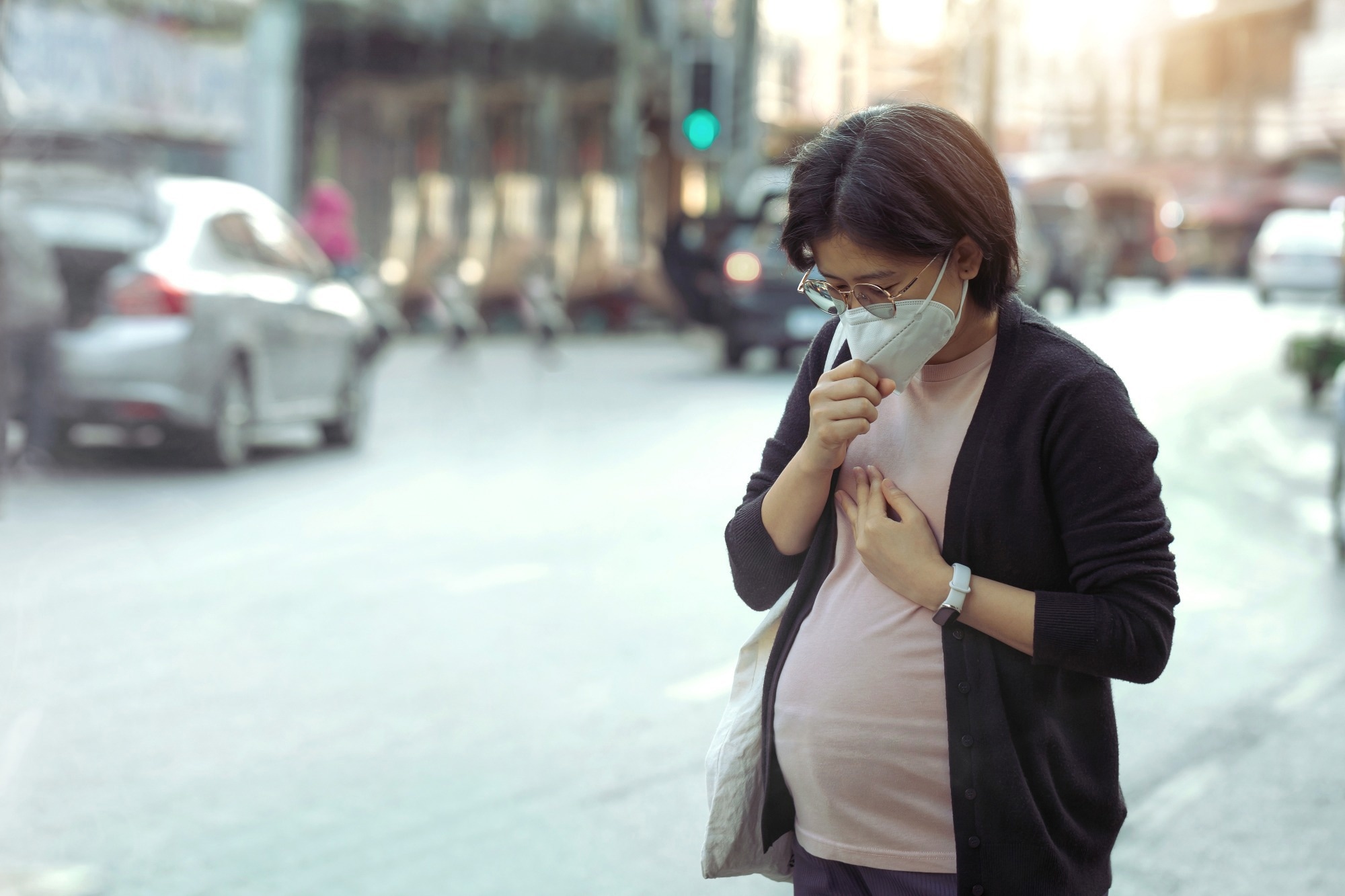New findings from Ontario’s largest birth cohort reveal that sulfate and ammonium particles in fine air pollution may disrupt fetal brain development, highlighting the need for cleaner air in urban and disadvantaged communities.

Research: Prenatal Exposure to Fine Particulate Matter Components and Autism Risk in Childhood. Image Credit: chayanuphol / Shutterstock
Fetal exposure to sulfate and ammonium components of fine particulate matter is associated with increased risk of ASD in infants, as reported by a new study published in JAMA Network Open.
Background
Fine particulate matter (PM) is microscopic particles in the air with diameters of 2.5 micrometers or less (PM₂.₅), which are mainly produced from power plants, vehicles, industrial emissions, and burning fuels. These pollutants can easily enter the body through the lungs and bloodstream and cause a number of health problems, including cardiovascular and respiratory diseases.
Before-birth (prenatal) or early-life exposure to fine PM has been linked to increased risk of neurodevelopmental complications in infants, including ASD. Existing evidence indicates that fine PM may negatively affect fetal and infant brain development through epigenetic modification, inflammatory responses, and oxidative stress.
Most of the studies investigating pollutant-mediated health outcomes have focused on total fine PM mass, often overlooking potential variability in toxic effects among its chemical components. Currently, there is a lack of information regarding the impact of non-metal components of fine PM on the risk of neurodevelopmental disorders in infants.
The current study aimed to investigate whether prenatal or early-life exposure to fine PM components increases the risk of ASD in infants.
Study design
The study analyzed administrative health data covering approximately 98% of births in Ontario, Canada. A total of 2,183,324 births with gestational age 36 to 42 weeks were included in the study.
Biweekly concentrations of fine PM components (black carbon, dust, ammonium, nitrate, organic matter, sulfate, sea salt) and weekly concentrations of other air pollutants (NO₂ and ozone) were estimated from conception to age 36 weeks, using satellite and ground-based models. Critically, prenatal models that adjusted for first-year postnatal exposure isolated prenatal effects.
Appropriate statistical analyses were conducted to assess the impact of prenatal or early-life exposure to fine PM components and other air pollutants on the risk of developing ASD by age 5.
Key findings
The study analysis revealed that prenatal exposure to the sulfate and ammonium components of fine PM was associated with a significantly increased risk of developing ASD (15% and 12% higher risk per IQR increase, respectively).
Notably, total PM₂.₅ mass was not significantly associated with ASD risk after accounting for sulfate and ammonium exposure during critical windows.
Similarly, exposure to ozone during the first postnatal year was associated with a significantly increased risk of ASD (9% higher risk), though prenatal ozone associations became non-significant after adjustment (HR=1.06, 95% CI 0.98–1.14).
The second and third trimesters of pregnancy (weeks 14–32 for PM₂.₅, weeks 23–36 for sulfate, weeks 21–34 for ammonium) appeared to be the most vulnerable periods of exposure with the highest risk of disease development. Associations were stronger in male infants, though sulfate exposure remained significant in females.
Study significance
The study reports that fetal exposure to sulfate and ammonium components of fine PM during mid to late pregnancy can significantly increase the risk of developing ASD in infants. The risk is also high for infants exposed to ambient ozone during their first year after birth.
The major pathways that may contribute to the observed associations are oxidative stress and neuroinflammation. Exposure to fine PM has been hypothesized to alter the composition and diversity of the gut microbiota, leading to systemic inflammation and disruption of tryptophan metabolism. All these factors are theorized to contribute to neurodevelopmental disorders via the gut-brain axis, potentially.
Fine PM may also exert neurotoxic effects by triggering epigenetic changes, such as DNA methylation of genes associated with ASD.
The study identifies sulfate and ammonium as the major components of fine PM with the highest risk of disease development. Sulfate mainly comes from regional combustion sources that use high-sulfur fuels, whereas ammonium typically arises from sources including fertilizer use and sewage treatment, as well as from tailpipe emissions from motor vehicles in urban regions.
Laboratory studies suggest ammonium can affect neurodevelopment by disrupting astrocytes and neurotransmission. Both sulfate and ammonium have also been linked to oxidative stress and neuroinflammation, which are major hallmarks of ASD.
According to the study's findings, the mid to late pregnancy period is the most critical exposure period. Fetal exposure to these specific PM components during this period is associated with the highest risk of developing ASD.
Late pregnancy is critical for placental function, fetal growth, and brain development. Various neurodevelopmental processes occur during this stage, including the formation of a protective and insulating layer around nerve cells, neuronal organization, and the formation of new neural connections. Fetal exposure to fine PM during late pregnancy can impair these processes, leading to the development of neuronal disorders, such as ASD.
Regarding other air pollutants, the study reports that exposure to ozone during the first year of life also increases the risk of ASD. Various brain developmental and maturation processes occur during this period. Animal studies have linked ozone exposure to oxidative stress and mitochondrial dysfunction. In experimental models, ozone exposure has been found to cause autism-like behaviors.
Notably, the study reports that the association between fine PM exposure and autism risk is pronounced in urban regions, but not in rural areas. The risk is notably higher in low-income and middle-income neighborhoods with a high proportion of racial minority or newcomer populations. Socioeconomically deprived populations generally live near high-emitting facilities or major highways and are therefore more likely to be exposed to air pollutants.
The authors note several limitations: exposure was estimated at the neighborhood level (postal code) rather than using personal monitors; autism ascertainment had 50% sensitivity, potentially missing cases; and individual-level factors such as diet or genetics couldn't be fully accounted for.
Overall, the study findings highlight the need for public health strategies to reduce air pollution, particularly in urban and socioeconomically disadvantaged regions.